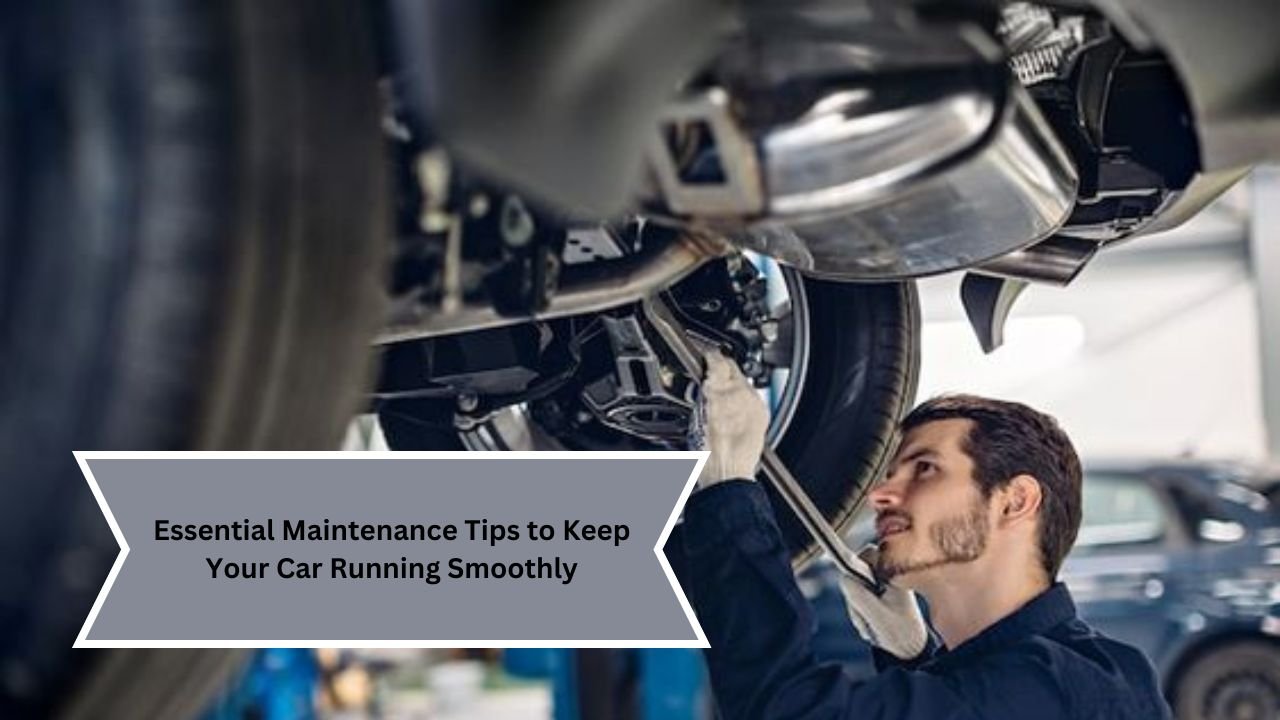Owning a car comes with the responsibility of keeping it in top shape. Regular maintenance not only ensures your vehicle runs smoothly but also prolongs its lifespan and enhances safety. Whether you’re a seasoned car owner or a new driver, understanding essential maintenance tips can help you avoid costly repairs and ensure a reliable ride. Here’s a comprehensive guide to keeping your car in peak condition.
1. Regular Oil Changes
One of the most critical aspects of car maintenance is regular oil changes. Engine oil lubricates moving parts, reduces friction, and helps regulate engine temperature. Over time, oil breaks down and becomes less effective, leading to engine wear and tear.
How Often to Change Oil
Most manufacturers recommend changing your oil every 5,000 to 7,500 miles, but this can vary based on your vehicle and driving habits. Always consult your owner’s manual for specific guidance.
Tips for Oil Changes
- Check Oil Level: Use the dipstick to check oil levels monthly and top up if necessary.
- Choose the Right Oil: Use the recommended oil grade for your vehicle to ensure optimal performance.
2. Tire Maintenance
Tires are your vehicle’s only contact with the road, making their maintenance crucial for safety and efficiency.
Regular Checks
- Tire Pressure: Check tire pressure at least once a month. Under-inflated tires can reduce fuel efficiency and increase wear.
- Tread Depth: Use the penny test—insert a penny into the tread with Lincoln’s head facing down. If you can see the top of his head, it’s time for new tires.
Rotating Tires
To promote even wear, rotate your tires every 5,000 to 7,500 miles. This simple step can extend their life and improve handling.
3. Brake Inspections
Brakes are vital for safety. Regularly inspect brake pads and discs for wear and listen for unusual noises when braking.
Signs of Brake Issues
- Squeaking or Grinding Sounds: These may indicate worn brake pads.
- Vibration or Pulling: If your car pulls to one side when braking, it could be a sign of uneven wear or a more serious issue.
When to Replace Brakes
Brake pads typically need replacement every 30,000 to 70,000 miles, depending on driving conditions. Always refer to your owner’s manual for guidance.
4. Fluid Levels and Maintenance
In addition to engine oil, several other fluids are crucial for vehicle operation.
Essential Fluids to Check
- Coolant: Prevents overheating and protects the engine. Check levels regularly and top up as needed.
- Transmission Fluid: Ensures smooth shifting. Change it according to your manufacturer’s recommendations, often around 30,000 to 60,000 miles.
- Brake Fluid: Essential for proper braking. Check the reservoir regularly and replace it if it appears dark or contaminated.
Regular Flushes
Perform regular fluid flushes as recommended by the manufacturer to keep systems running smoothly.
5. Battery Care
A well-maintained battery is essential for starting your vehicle and powering electrical components.
Routine Checks
- Clean Terminals: Corrosion can build up on battery terminals, leading to starting issues. Clean them with a mixture of baking soda and water.
- Check Voltage: Use a multimeter to check battery voltage. A healthy battery should read around 12.6 volts.
Replacement Timing
Car batteries typically last three to five years. If you notice dimming lights or slow engine cranking, it may be time for a replacement.
6. Air Filter Replacement
The engine air filter prevents dirt and debris from entering the engine, ensuring optimal performance.
Replacement Frequency
Check and replace the air filter every 15,000 to 30,000 miles, or more frequently if you drive in dusty conditions.
Benefits of a Clean Air Filter
A clean air filter improves fuel efficiency and engine performance. It also enhances air quality inside the vehicle, benefiting passengers.
7. Wiper Blades and Lights
Visibility is key to safe driving, making wiper blades and lights essential components.
Wiper Blade Care
Replace wiper blades every six months to a year, especially if you notice streaking or skipping. Regularly check the wiper fluid reservoir and refill as necessary.
Light Checks
Regularly inspect headlights, taillights, and turn signals. Replace any burned-out bulbs promptly to ensure safe driving conditions.
8. Keeping the Interior and Exterior Clean
While it may seem superficial, maintaining a clean car contributes to overall longevity and comfort.
Exterior Maintenance
- Regular Washes: Wash your car every few weeks to remove dirt, grime, and salt, which can lead to rust.
- Waxing: Apply wax every three months to protect the paint and maintain shine.
Interior Care
- Vacuum Regularly: Keep the interior tidy by vacuuming and wiping surfaces to prevent dirt buildup.
- Condition Leather: If your vehicle has leather seats, use a conditioner every few months to prevent cracking.
9. Scheduling Regular Inspections
Regular inspections are a proactive way to catch issues before they escalate into costly repairs.
Professional Inspections
Consider scheduling a professional inspection at least once a year. Technicians can identify potential problems and recommend necessary repairs or maintenance.
Emissions Testing
In many areas, emissions testing is mandatory. Regular maintenance can help your vehicle pass these tests and contribute to a cleaner environment.
10. Listening to Your Car
Perhaps the most important maintenance tip is to listen to your vehicle. Unusual sounds, smells, or performance changes can signal underlying issues.
Common Signs of Trouble
- Strange Noises: Grinding, knocking, or whistling can indicate mechanical issues.
- Warning Lights: Pay attention to dashboard warning lights. Don’t ignore them; consult your manual to understand their significance.
Conclusion
Regular maintenance is crucial for keeping your car running smoothly and safely. By following these essential tips, you can enhance your vehicle’s performance, extend its lifespan, and avoid costly repairs down the line. Remember, a well-maintained car not only offers peace of mind but also ensures a safer driving experience for you and your passengers. Take the time to invest in your vehicle, and it will serve you well for years to come.

